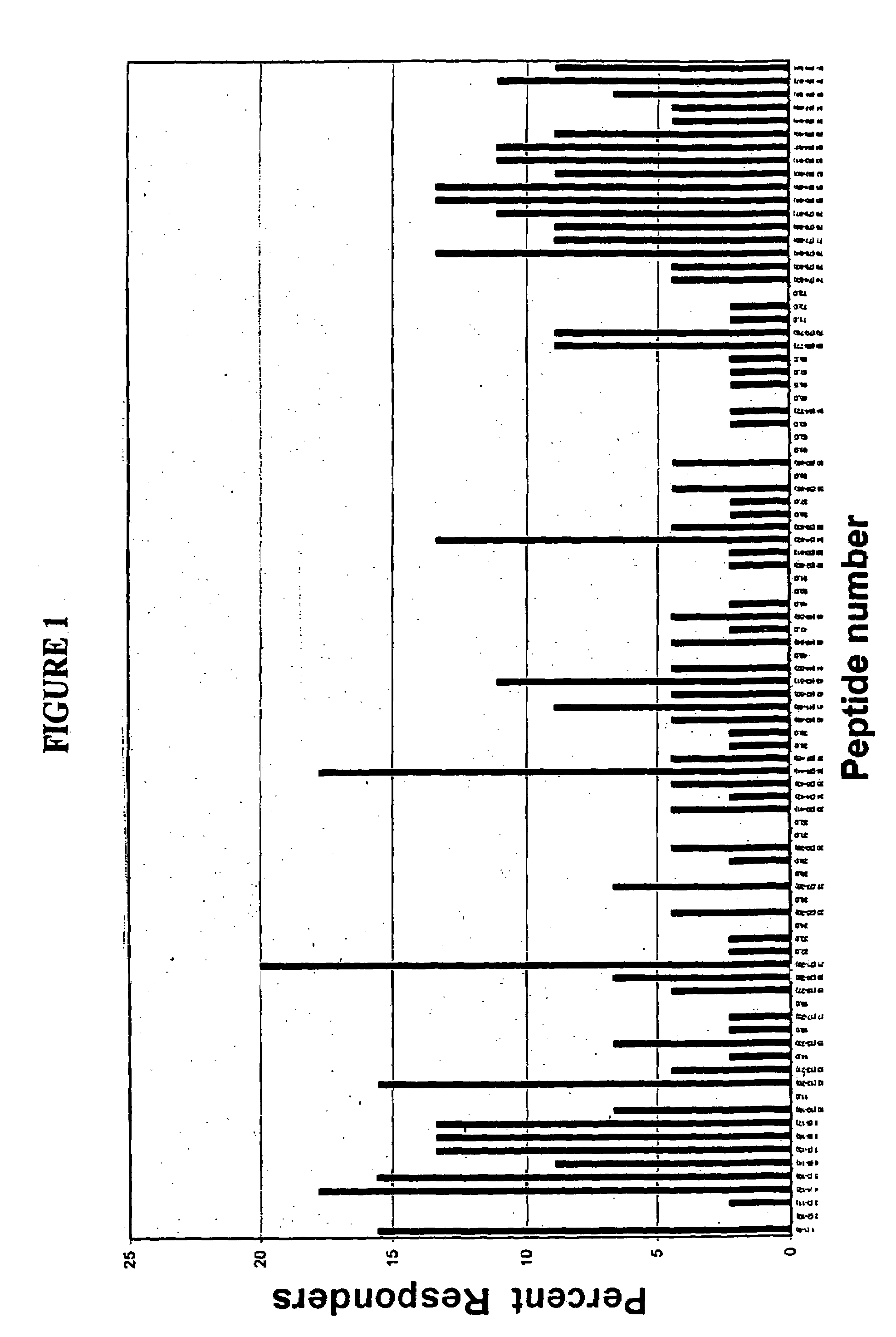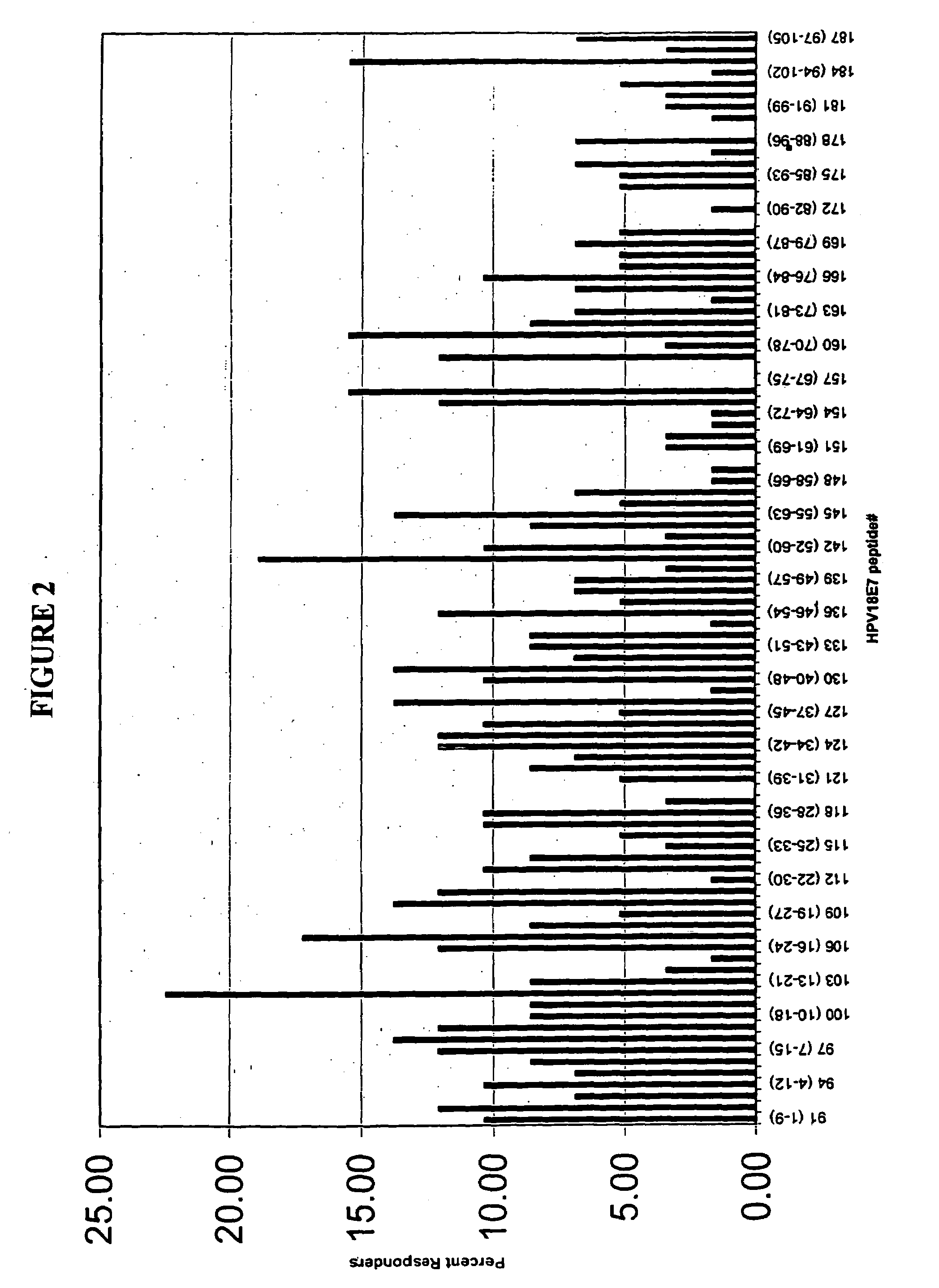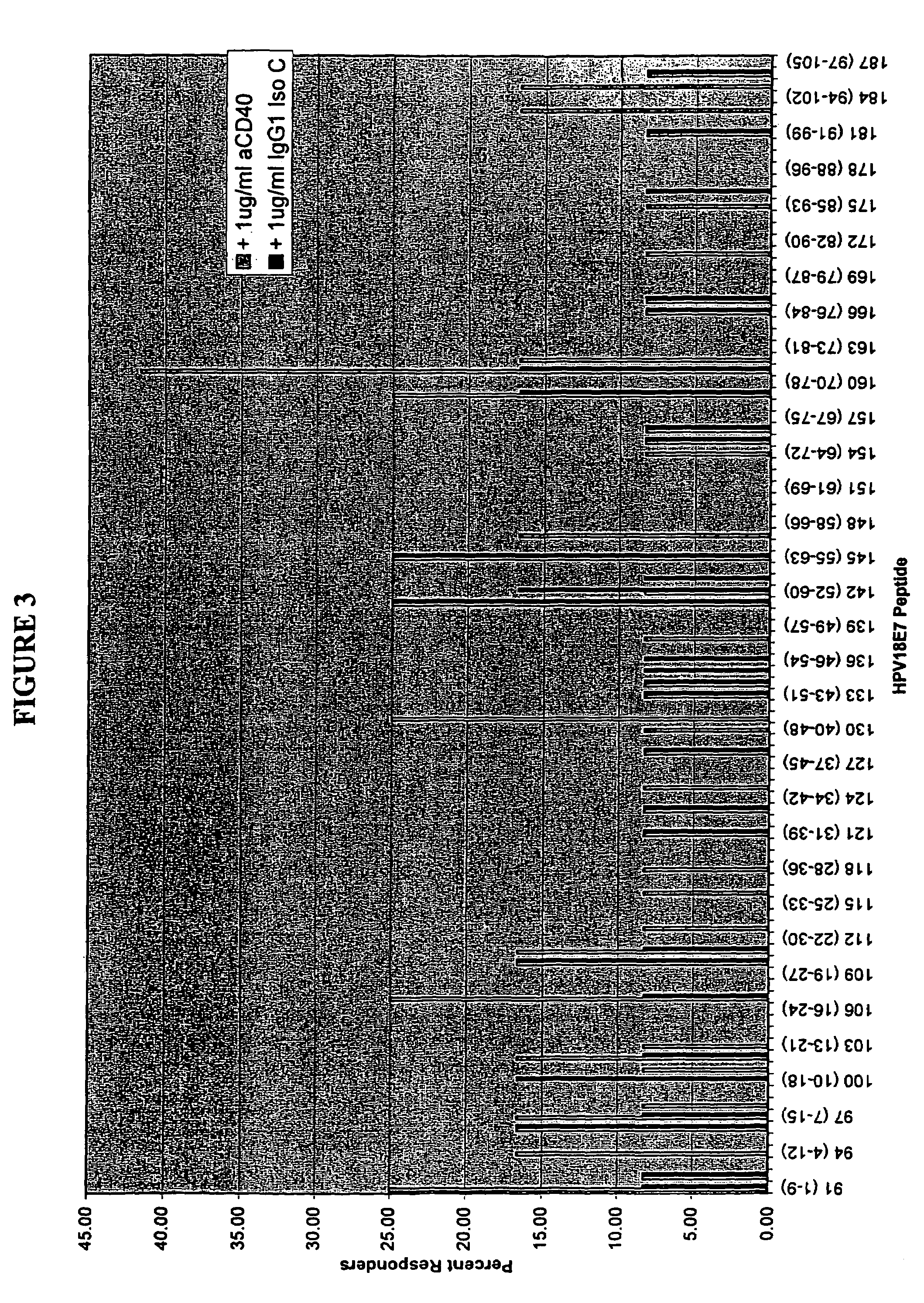HPV CD8+ T-cell epitopes
a technology of t-cells and epitopes, applied in the field of hpv cd8 + t-cell epitopes, can solve the problems of ineffective cells, and achieve the effect of increasing the immunogenicity of hpv epitopes
- Summary
- Abstract
- Description
- Claims
- Application Information
AI Technical Summary
Benefits of technology
Problems solved by technology
Method used
Image
Examples
example 1
Preparation of E7 Epitopes
[0131]Full length amino acid sequences of E7 proteins from HPV 16, and 18, were used to create 9-merpeptide sets. SwissProt. PO3129 corresponds to HPV16 E7. SwissProt. P06788 corresponds to HPV18 E7. These variant peptides were synthesized by Mimotopes, using the multi-pin synthesis technique known in the art (See e.g., Maeji et al., J. Immunol. Meth., 134:23–33 [1990]). The 9-mer peptides were created such that sequences with adjacent peptides shared 8 amino acids (i.e., each peptide was offset by one amino acid). Peptides were diluted with DMSO to provide a stock concentration of approximately 2 mg / ml. The final concentration of peptides used in each assay was 5 μg / ml.
example 2
Preparation of Cells Used in the Assay System for the Identification of Peptide T-Cell Epitopes in HPV Using Human T-Cells
[0132]Fresh human peripheral blood cells were collected from humans of unknown exposure status to HPV. These cells were tested to determine antigenic epitopes in HPV 16 and 18, as described in Example 3.
[0133]Peripheral mononuclear blood cells (stored at room temperature, no older than 24 hours) were prepared for use as follows. PBMC's were isolated from buffy coat material by centrifuging over an underlay of Lymphoprep at 1000×g for 30 minutes. The interface layer was collected and washed and counted using the Cell-Dyn 3700 System (Abbott). Then, suspensions containing 108 PBMC's resuspended in 30 ml of AIM-V (Invitrogen) were prepared and then allowed to adhere to plastic T-75 culture flasks for two hours. The remainder of the cells were frozen at 5×107 cells / ml in 45% FCS (Gibco / BRL), 45% PBS w / o Ca & Mg (Mediatech), and 10% DMSO (Sigma). After the two hour PB...
example 3
T-Cell Proliferation Assays
[0135]This Example describes the assay system used in the present invention. The basic test system is also referred to as the “I-MUNE®” assay system. The basic I-MUNE® assay system was modified as described herein to facilitate analysis of CD8+ T-cell responses. As described in greater detail below, the modifications used in the development of the present invention involved the use of CD8 negative selection beads on PBMC (i.e., instead of CD4). In addition, when CD8 cells were resuspended, between 1.5×105 ml and 2.5×105 ml of a 2 ug / ml anti-CD40 solution was added, before placing the DCs and peptides in the plates (the final concentration of anti-CD40 was 1 ug / ml); and 1 ul of 1 ug / ml PHA was used as a positive control, instead of tetanus toxoid.
[0136]In 96-well, round bottom plates, autologous dendritic cells and CD8+ T-cells were combined with test peptides. More specifically, in a volume of 100 μl / well, 2×104 dendritic cells in AIM V were combined with ...
PUM
| Property | Measurement | Unit |
|---|---|---|
| Tm | aaaaa | aaaaa |
| Tm | aaaaa | aaaaa |
| Tm | aaaaa | aaaaa |
Abstract
Description
Claims
Application Information
 Login to View More
Login to View More - R&D
- Intellectual Property
- Life Sciences
- Materials
- Tech Scout
- Unparalleled Data Quality
- Higher Quality Content
- 60% Fewer Hallucinations
Browse by: Latest US Patents, China's latest patents, Technical Efficacy Thesaurus, Application Domain, Technology Topic, Popular Technical Reports.
© 2025 PatSnap. All rights reserved.Legal|Privacy policy|Modern Slavery Act Transparency Statement|Sitemap|About US| Contact US: help@patsnap.com



